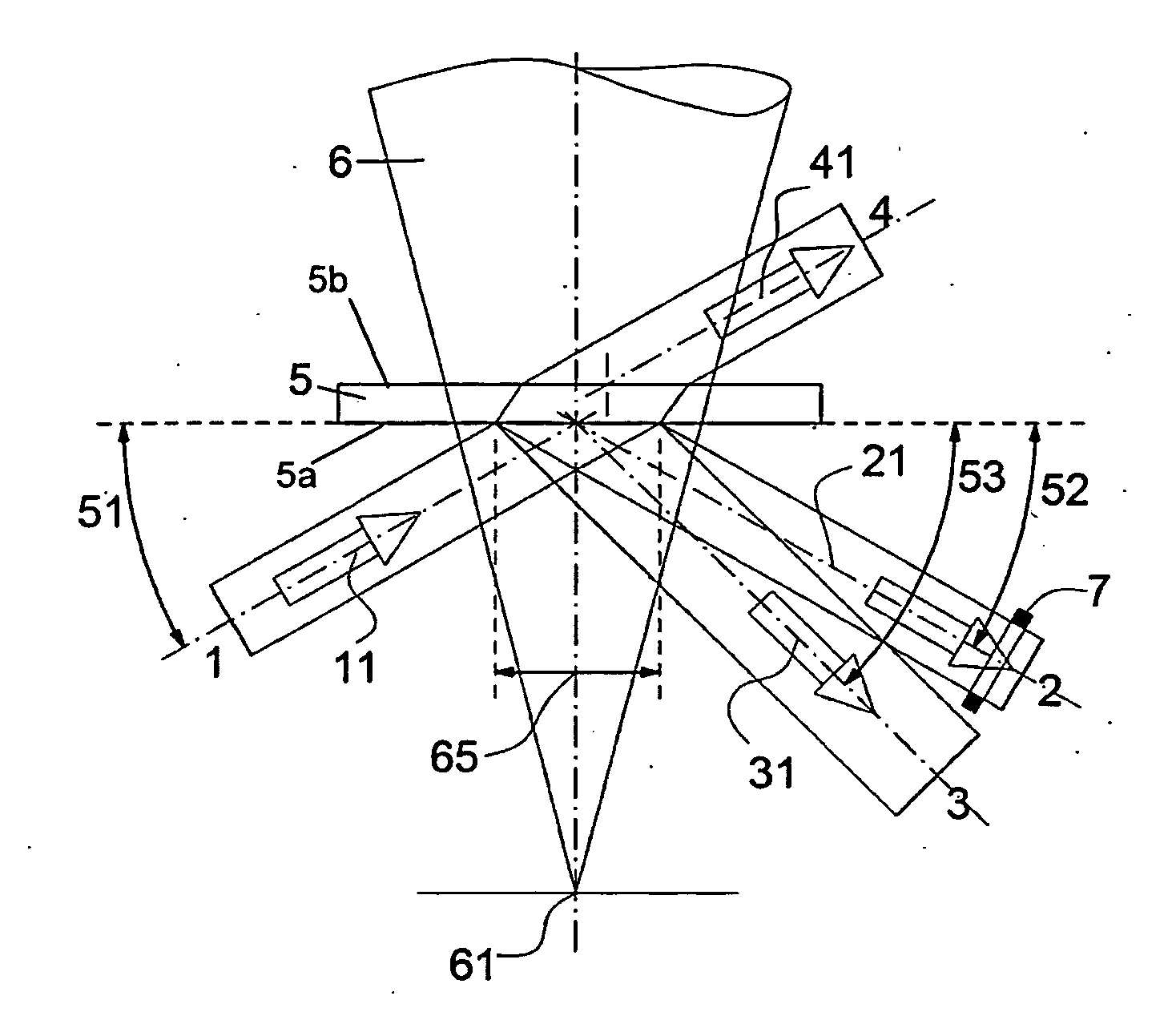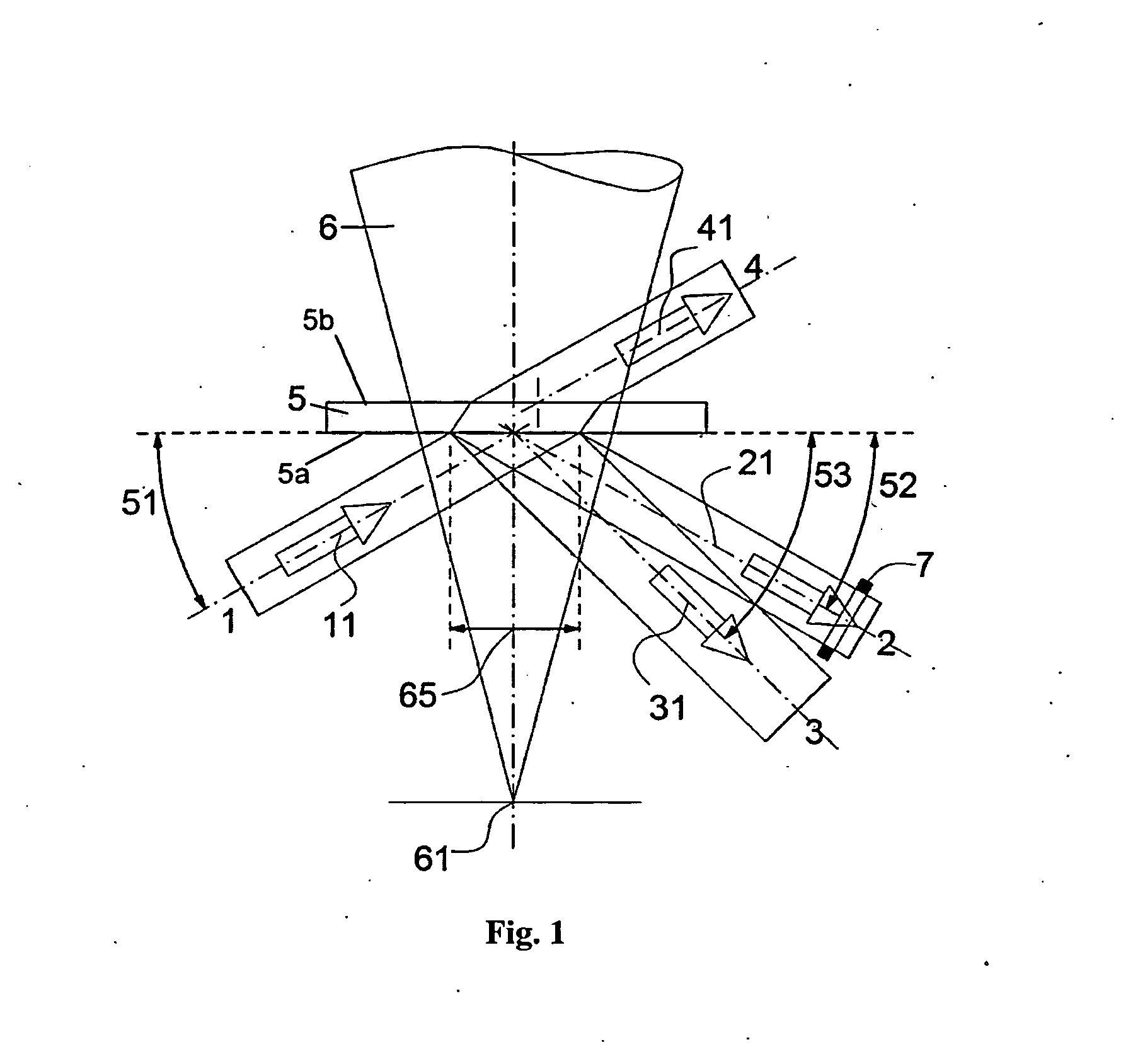Method and monitoring device for the detection and monitoring of the contamination of an optical component in a device for laser material processing
- Summary
- Abstract
- Description
- Claims
- Application Information
AI Technical Summary
Benefits of technology
Problems solved by technology
Method used
Image
Examples
Embodiment Construction
[0034]To implement the method in accordance with the invention, a monitoring device is used, as shown schematically in FIG. 1. This monitoring device is provided for incorporation into the processing head of a device for laser material processing. Such a processing head is shown in FIG. 6.
[0035]The processing head emits a process laser beam 6 through a protecting, optically transparent window 5, which protects the other optical components in the processing head against process-caused spatters 55. The protective window 5 is appropriately provided with an antireflective (AR) coating. The process laser beam 6 is focused in a focal point 61 (tool center point, TCP) on the surface of a specimen to be processed.
[0036]The monitoring device shown in FIG. 1 comprises a light source 1, for example, a light-emitting diode or a laser diode, that irradiates a preferably collimated measurement beam 11 onto a central area 65 of the optical surface 5a of the protective window 5, facing the process,...
PUM
| Property | Measurement | Unit |
|---|---|---|
| Angle | aaaaa | aaaaa |
| Wavelength | aaaaa | aaaaa |
| Reflection | aaaaa | aaaaa |
Abstract
Description
Claims
Application Information
 Login to View More
Login to View More - R&D
- Intellectual Property
- Life Sciences
- Materials
- Tech Scout
- Unparalleled Data Quality
- Higher Quality Content
- 60% Fewer Hallucinations
Browse by: Latest US Patents, China's latest patents, Technical Efficacy Thesaurus, Application Domain, Technology Topic, Popular Technical Reports.
© 2025 PatSnap. All rights reserved.Legal|Privacy policy|Modern Slavery Act Transparency Statement|Sitemap|About US| Contact US: help@patsnap.com



